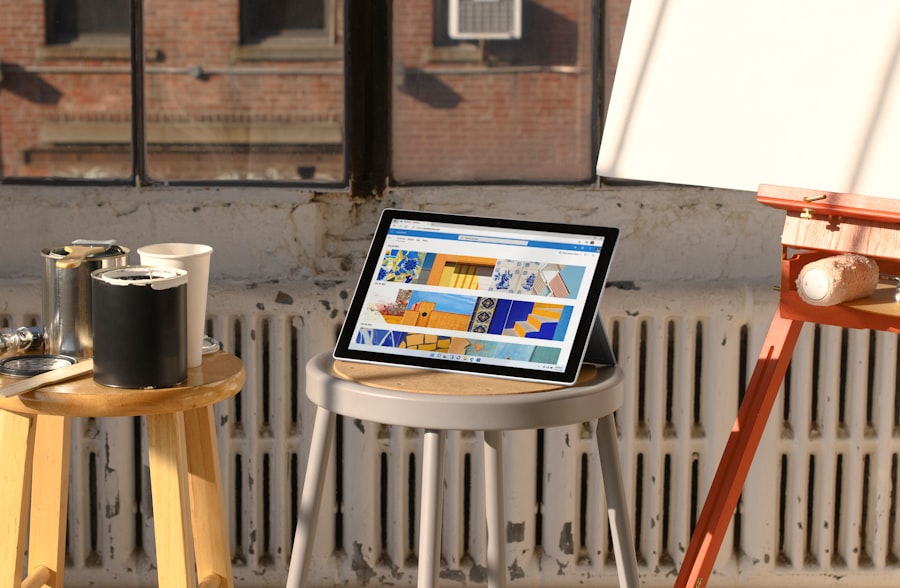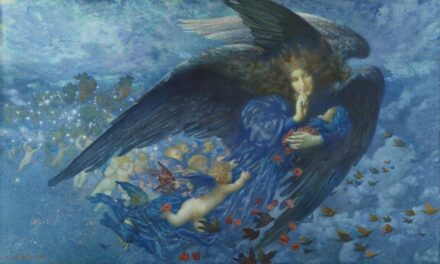Art, in its myriad forms, serves as a profound reflection of human experience, emotion, and intellect. It transcends the boundaries of language and culture, offering a universal medium through which individuals can express their innermost thoughts and feelings. From the earliest cave paintings to the intricate digital installations of today, art has been an integral part of human existence, shaping and being shaped by the societies in which it exists.
The world of art is not merely a collection of beautiful objects; it is a dynamic dialogue that spans centuries, inviting us to explore the depths of creativity and imagination. As we delve into the world of art, we encounter a rich tapestry woven from diverse threads of history, culture, and personal expression. Each piece tells a story, whether it be a grand historical narrative or an intimate glimpse into the artist’s psyche.
The appreciation of art requires not only an understanding of its aesthetic qualities but also an awareness of the context in which it was created. This exploration opens up a realm of possibilities, allowing us to engage with art on multiple levels—intellectually, emotionally, and spiritually.
Exploring Different Art Movements
Throughout history, various art movements have emerged, each characterised by distinct philosophies, techniques, and aesthetics. The Renaissance, for instance, marked a significant shift in artistic expression, as artists like Leonardo da Vinci and Michelangelo sought to revive classical ideals and explore humanism. This period was defined by a renewed interest in the natural world and the human form, leading to groundbreaking advancements in perspective and composition.
The works produced during this time not only celebrated beauty but also delved into the complexities of human emotion and experience. In contrast, the 20th century witnessed the rise of movements such as Cubism and Surrealism, which challenged traditional notions of representation and reality. Artists like Pablo Picasso and Salvador Dalí pushed the boundaries of perception, inviting viewers to engage with their work in new and often disorienting ways.
These movements reflected the tumultuous social and political landscapes of their time, serving as both a response to and a critique of contemporary society. By examining these diverse movements, we gain insight into how art evolves in tandem with cultural shifts, revealing the ever-changing nature of human expression.
Understanding the Role of Art in Society

Art plays a multifaceted role in society, serving as a mirror that reflects cultural values, beliefs, and aspirations. It has the power to provoke thought, inspire change, and foster dialogue among individuals from different backgrounds. Throughout history, artists have used their work to comment on social issues, challenge authority, and advocate for justice.
From the politically charged murals of Diego Rivera to the poignant photography of Dorothea Lange during the Great Depression, art has often been at the forefront of social movements, galvanising public sentiment and encouraging collective action. Moreover, art serves as a means of preserving cultural heritage and identity. In many societies, traditional art forms are passed down through generations, embodying the stories and experiences of communities.
These artistic practices not only celebrate cultural diversity but also promote understanding and appreciation among different groups. In an increasingly globalised world, the role of art in fostering cross-cultural dialogue is more important than ever, as it encourages empathy and connection in an era often marked by division.
The Evolution of Art Techniques and Materials
The evolution of art techniques and materials is a testament to humanity’s relentless pursuit of innovation and creativity. From the use of natural pigments in prehistoric cave paintings to the development of oil paints during the Renaissance, artists have continually sought new ways to express their visions. The introduction of perspective transformed how space was represented on canvas, while advancements in colour theory allowed for greater emotional depth in artworks.
Each new technique opened up fresh avenues for exploration, enabling artists to push the boundaries of their craft. In recent years, the advent of digital technology has revolutionised artistic practice once again. Artists now have access to an array of tools that allow for unprecedented experimentation with form and medium.
Digital painting software enables creators to manipulate colour and texture with ease, while 3D printing technology offers new possibilities for sculpture and installation art. This evolution not only expands the artist’s toolkit but also challenges traditional definitions of what constitutes art. As techniques continue to evolve, so too does our understanding of creativity itself.
Art as a Reflection of Culture and History
Art is intrinsically linked to culture and history; it serves as both a record and a commentary on the human experience. Each artwork encapsulates the zeitgeist of its time, reflecting societal norms, values, and struggles. For instance, the Impressionist movement emerged in response to the rapid industrialisation of 19th-century France, capturing fleeting moments of everyday life with a sense of immediacy that resonated with contemporary audiences.
Similarly, African tribal masks convey deep cultural significance, embodying spiritual beliefs and social structures that have been passed down through generations. Moreover, art can act as a catalyst for change by challenging dominant narratives and offering alternative perspectives. The works of artists such as Frida Kahlo and Jean-Michel Basquiat confront issues of identity, race, and gender, inviting viewers to engage with complex social realities.
By examining these artistic expressions within their historical contexts, we gain valuable insights into the forces that shape our world. Art not only reflects culture but also has the power to influence it, sparking conversations that can lead to greater understanding and progress.
The Impact of Technology on Contemporary Art

The impact of technology on contemporary art cannot be overstated; it has transformed how artists create, distribute, and engage with their work. The rise of social media platforms has democratized access to art, allowing artists to reach global audiences without relying on traditional galleries or institutions. This shift has given rise to new forms of artistic expression, such as digital art and video installations that challenge conventional notions of medium and space.
Furthermore, technology has enabled innovative collaborations between artists and scientists or engineers, resulting in interdisciplinary projects that blur the lines between art and science. For example, interactive installations that incorporate virtual reality invite viewers to immerse themselves in entirely new environments, fostering a sense of connection that transcends physical boundaries. As technology continues to evolve at an unprecedented pace, it will undoubtedly shape the future landscape of art in ways we have yet to fully comprehend.
Art as a Form of Expression and Communication
At its core, art is a powerful form of expression that transcends linguistic barriers. It allows individuals to communicate complex emotions and ideas that may be difficult to articulate through words alone. Artists often draw upon their personal experiences to create works that resonate with others on a deeply emotional level.
Whether through painting, sculpture, or performance art, these expressions can evoke empathy and understanding among viewers from diverse backgrounds. Moreover, art serves as a vital tool for communication within communities. Public art projects—such as murals or installations—can address local issues or celebrate cultural heritage while fostering a sense of belonging among residents.
These collaborative efforts not only beautify public spaces but also encourage dialogue about shared experiences and aspirations. In this way, art becomes a vehicle for connection and understanding in an increasingly fragmented world.
The Future of Art: Trends and Innovations
As we look towards the future of art, several trends and innovations are emerging that promise to reshape the artistic landscape. One notable trend is the increasing emphasis on sustainability within artistic practice. Many contemporary artists are exploring eco-friendly materials and methods as they seek to address pressing environmental concerns through their work.
This shift not only reflects a growing awareness of ecological issues but also challenges artists to rethink their relationship with materials and consumption. Additionally, the rise of artificial intelligence (AI) in creative processes is sparking debates about authorship and originality in art. AI-generated artworks are becoming more prevalent, prompting questions about what it means to be an artist in an age where machines can produce visually stunning pieces.
As technology continues to advance, artists will need to navigate these complexities while remaining true to their unique voices. In conclusion, the world of art is an ever-evolving realm that reflects our shared humanity through diverse expressions across time and space. By exploring different movements, understanding its societal role, examining techniques and materials, recognising its cultural significance, embracing technological advancements, appreciating its communicative power, and anticipating future trends, we gain a deeper appreciation for this vital aspect of our existence.
Art is not merely an object; it is a living dialogue that invites us all to participate in the ongoing narrative of human creativity.
If you enjoyed the artistic journey through different paintings, you may also be interested in reading about Homage to the Square: Against Deep Blue (1955) by Josef Albers. This article delves into the fascinating world of abstract art and the unique techniques used by Albers to create his masterpiece. Explore the intricate details and symbolism behind this iconic painting to further enrich your understanding and appreciation of art.



